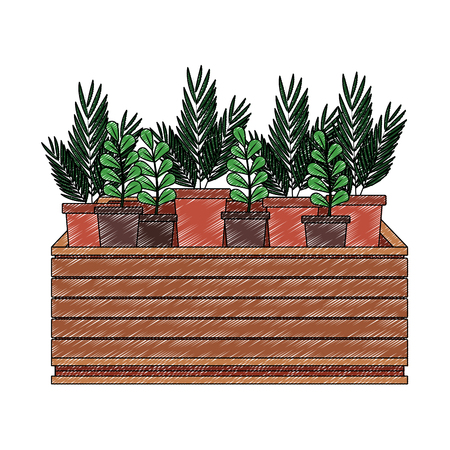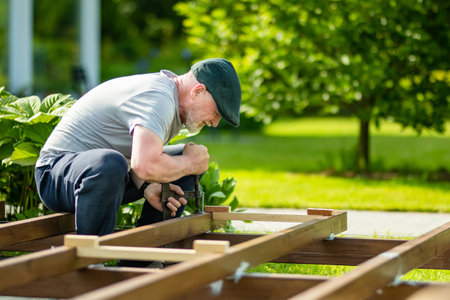1. Introduction to Urban and Small-Space Edible Landscaping
Edible landscaping has become a transformative trend in urban America, where outdoor space is often at a premium. This innovative approach merges the practicality of growing food with the beauty of traditional landscaping, making it possible for city dwellers and those with small yards or balconies to cultivate their own fresh produce. By integrating fruits, vegetables, herbs, and edible flowers into residential landscapes, people can maximize their available space while enjoying both visual appeal and homegrown harvests.
Across U.S. cities from New York to San Francisco, modern edible landscaping trends focus on sustainability, resource efficiency, and community engagement. These designs often incorporate vertical gardens, raised beds, container gardening, and compact plant varieties that thrive in limited spaces. Whether you have a rooftop terrace or a tiny backyard, edible landscaping offers key benefits such as reducing grocery bills, promoting healthy eating habits, increasing property value, and supporting local pollinators.
| Key Benefit | Description |
|---|---|
| Space Efficiency | Utilizes vertical and small-scale gardening methods perfect for urban settings. |
| Fresh Produce | Provides immediate access to organic fruits, vegetables, and herbs. |
| Sustainability | Reduces carbon footprint by minimizing transport and packaging needs. |
| Aesthetic Appeal | Adds visual interest with colorful edible plants integrated into landscape design. |
| Community Connection | Encourages neighborhood interaction through shared gardens and local initiatives. |
As more Americans seek green solutions in urban living, understanding the fundamentals of edible landscaping becomes essential for maximizing small outdoor areas while embracing contemporary garden trends.
Assessing Your Space and Light Conditions
When it comes to edible landscaping in urban and small-space environments, understanding your available space and sunlight exposure is crucial for success. Whether you’re working with a cozy balcony, a compact patio, or a shared rooftop, each site presents its own unique challenges and opportunities. Before selecting plants, take time to evaluate the dimensions of your area and note any permanent structures such as railings, walls, or air conditioning units that could affect plant placement.
Evaluating Compact Spaces
Start by measuring your available gardening area. Even in tight quarters, creative solutions like vertical gardens, raised beds, or container arrangements can maximize productivity. Consider traffic flow and accessibility—ensure there’s enough room for tending to your plants without overcrowding. Below is a quick comparison of common urban gardening spaces:
| Space Type | Typical Size (sq ft) | Best Features | Common Limitations |
|---|---|---|---|
| Balcony | 10–40 | Good air circulation, easy access | Weight restrictions, wind exposure |
| Patio | 50–200 | Larger containers possible, flexible layout | Pavement heat, shade from buildings |
| Rooftop | Varies widely | Full sun potential, open design | Windy conditions, building regulations |
| Corners/Windowsills | <10 | Niche microclimates, ideal for herbs | Limited root space, inconsistent light |
Understanding Sunlight Patterns
The amount and intensity of sunlight your space receives will determine which edible plants will thrive. Track sunlight over the course of a day—urban settings often have shifting shadows due to neighboring buildings or trees. Most fruiting vegetables (like tomatoes and peppers) need 6-8 hours of direct sun daily, while leafy greens and many herbs tolerate partial shade. Use the table below as a guide:
| Sun Exposure Per Day | Suitable Edible Plants | Notes/Tips |
|---|---|---|
| Full Sun (6+ hrs) | Tomatoes, peppers, strawberries, basil | Avoid placing near reflective surfaces that amplify heat. |
| Partial Sun (4–6 hrs) | Lettuce, spinach, chard, mint, parsley | Ideal for morning sun or dappled afternoon light. |
| Shade (2–4 hrs) | Mushrooms, some leafy greens (arugula), chives | Focus on crops tolerant of low light and cooler temps. |
Troubleshooting Urban Challenges
If your space struggles with limited light or fluctuating conditions, consider using reflective materials to brighten shaded areas or portable containers to “chase the sun.” Small adjustments like these can make a significant difference in what you can successfully grow in your urban oasis.

3. Choosing the Best Edible Plants for Urban Gardens
When selecting edible plants for urban and small-space landscaping, it’s essential to consider varieties that are not only compact but also resilient in diverse American city climates. Urban microclimates—whether you’re dealing with rooftop heat, shaded balconies, or limited ground space—require adaptable plants. Below is a table highlighting top-performing vegetables, herbs, and fruit options suitable for container gardening and small plots commonly found in American cities.
Plant Type |
Recommended Varieties |
Growing Conditions |
Urban Benefits |
|---|---|---|---|
| Vegetables | Bush Tomatoes, Patio Peppers, Leaf Lettuce, Baby Carrots, Radishes | Full sun to partial shade; well-draining soil; regular watering | Fast-growing, compact size, high yield per square foot |
| Herbs | Basil, Mint (in pots), Chives, Parsley, Thyme | Partial sun to full sun; containers or window boxes; minimal space needed | Aromatic foliage, continual harvest, enhances meals and drinks |
| Fruits | Dwarf Blueberries, Strawberries (everbearing), Fig Trees (container-sized), Lemon Balm (herb/fruit hybrid) | Full sun; large containers or raised beds; acidic soil for berries | Decorative appeal, fresh snacking, pollinator-friendly flowers |
Expert Tips for Selection and Success
- Opt for Dwarf or Compact Varieties: These are bred specifically for container life and small spaces.
- Consider Climate Hardiness: Look for varieties labeled as tolerant of your USDA hardiness zone or with proven records in U.S. urban gardens.
- Mix Annuals and Perennials: Combining fast-growing annuals like lettuce with perennial herbs or fruits maximizes space and provides harvest throughout the year.
Cultural Note:
Many American urban gardeners find success by collaborating through local community gardens or sharing plant cuttings with neighbors. This not only diversifies the edible landscape but also fosters a sense of community—a hallmark of urban gardening culture across the United States.
4. Creative Planting Solutions and Container Gardening
Urban dwellers and those with limited outdoor space can still enjoy a thriving edible landscape by embracing creative planting solutions. Even without a traditional backyard, you can grow your own herbs, vegetables, and fruits using innovative techniques tailored for renters or homeowners who want flexibility and style.
Vertical Gardens: Growing Upwards
Vertical gardening is a game-changer for small spaces. By utilizing walls, fences, or balconies, you can maximize your growing area without sacrificing floor space. Modular vertical planters, pocket planters, or repurposed pallets make it easy to cultivate greens, strawberries, or even tomatoes. Hanging baskets are another excellent choice, adding color and function to patios or fire escapes.
Raised Beds: Maximizing Efficiency
Raised beds are perfect for urban yards, rooftops, or community garden plots. They offer superior drainage and soil control while making gardening accessible to people of all ages. For renters, lightweight raised beds made of composite materials or fabric can be easily relocated when moving. Consider square foot gardening methods within raised beds to optimize every inch of growing space.
Innovative Container Planting Techniques
Container gardening offers unmatched flexibility—ideal for balconies, patios, and window sills. From classic clay pots to self-watering containers and upcycled buckets, almost anything can become a productive planter with some creativity. Grouping containers together also creates microclimates that help plants thrive in urban settings.
Comparing Urban Planting Solutions
| Solution | Best For | Main Advantages |
|---|---|---|
| Vertical Gardens | Walls, Balconies | Saves space; decorative; great for small edibles |
| Raised Beds | Yards, Rooftops | Customizable; good soil control; easy access |
| Container Gardening | Patios, Indoors | Movable; versatile; suitable for any location |
Pro Tip:
Choose lightweight containers and modular systems if you’re renting or anticipate moving. Opt for edible varieties bred specifically for compact spaces—like patio tomatoes, bush beans, or dwarf fruit trees—for best results in small-scale urban landscapes.
5. Sustainable Practices and Pollinator Support
Integrating sustainable practices into your urban and small-space edible landscape not only benefits your garden but also supports the wider environment. By embracing eco-friendly methods, you can create a thriving, productive space that encourages biodiversity and resilience within city settings.
Composting: Turning Waste into Gold
Composting is a simple yet powerful way to recycle kitchen scraps and garden debris, transforming them into nutrient-rich soil. This process reduces landfill waste and enriches your edible plants naturally. Even in apartments or patios, compact compost bins or worm bins (vermicomposting) are effective solutions for managing organic waste.
Water Conservation Strategies
Urban gardeners often face water restrictions or limited access, making efficient use of water essential. Implementing drip irrigation systems, mulching, and selecting drought-tolerant edible plants ensures that your landscape remains lush while conserving resources. Collecting rainwater in barrels is another practical way to supplement your watering needs sustainably.
| Practice | Benefits | How to Implement |
|---|---|---|
| Drip Irrigation | Saves water by targeting plant roots directly | Install tubing and emitters around raised beds or containers |
| Mulching | Reduces evaporation and weeds; adds organic matter | Apply straw, wood chips, or compost around plants |
| Rainwater Harvesting | Lowers utility costs and reduces runoff | Place barrels under downspouts to collect rainwater for later use |
Supporting Native Pollinators
A healthy urban ecosystem depends on pollinators like bees, butterflies, and hummingbirds. Choosing native flowering herbs and fruiting plants—such as bee balm, echinacea, or blueberries—not only boosts yields but also provides food and shelter for vital pollinator populations. Avoid using chemical pesticides which can harm these beneficial insects.
Pollinator-Friendly Edible Plant Suggestions:
- Basil: Attracts bees and provides delicious leaves for cooking.
- Sage: Blooms attract hummingbirds and butterflies while offering aromatic herbs.
- Sunflowers: Draw pollinators and provide seeds for snacks.
- Blueberries: Native shrubs offer fruit for you and nectar for pollinators.
- Trellised Cucumbers or Beans: Climbing edibles with blossoms that invite bees.
Create a Lasting Impact
By adopting these sustainable strategies and supporting local pollinators, urban gardeners play a crucial role in nurturing resilient city ecosystems. Every compost bin, rain barrel, or pollinator-attracting plant helps transform small spaces into green havens that benefit both people and the planet.
6. Maintenance Tips for Maximizing Yields
Urban and small-space edible landscapes require strategic maintenance to ensure a healthy, productive garden that thrives despite the unique challenges of city living. Here are practical strategies for easy ongoing care, troubleshooting common issues, and tips for harvesting so you can enjoy continuous fresh produce.
Easy Ongoing Care Strategies
- Consistent Watering: Urban gardens often dry out faster due to concrete and wind. Use self-watering containers or drip irrigation to keep moisture levels steady.
- Mulching: Apply a layer of organic mulch (like straw or wood chips) to reduce evaporation and suppress weeds.
- Fertilizing: Urban soils can lack nutrients. Feed your plants regularly with slow-release organic fertilizers or compost tea.
- Pruning & Pinching: Regularly pinch back herbs and prune vegetables to encourage bushier growth and higher yields.
Troubleshooting Common Urban Gardening Challenges
| Challenge | Solution |
|---|---|
| Pests (aphids, squirrels, etc.) | Use row covers, introduce beneficial insects, and try DIY organic sprays (like neem oil). |
| Poor Sunlight | Select shade-tolerant edibles (like leafy greens), use reflective surfaces, or consider grow lights on patios/balconies. |
| Limited Space | Go vertical with trellises, hanging baskets, or wall-mounted planters; choose compact or dwarf varieties. |
Harvesting for Continuous Bounty
- Succession Planting: After harvesting one crop, immediately replant with another to maximize space and yield.
- Cut-and-Come-Again: Harvest outer leaves of greens and herbs instead of uprooting the whole plant—this encourages more growth.
- Regular Picking: Pick ripe fruits and veggies frequently; this promotes further production, especially in crops like beans, tomatoes, and zucchinis.
Your Urban Edible Landscape Calendar
| Task | Frequency |
|---|---|
| Watering | Daily (in hot weather); every 2–3 days otherwise |
| Fertilizing | Monthly or as directed on product label |
| Pest Check | Weekly |
| Harvesting | As soon as crops ripen; check several times weekly in peak season |
Keep It Simple & Enjoy the Process!
The key to thriving urban edible landscapes is a proactive approach: stay observant, address problems early, and celebrate even small harvests. With these maintenance tips tailored for American city life, you’ll create a sustainable green oasis that produces delicious rewards year-round.


